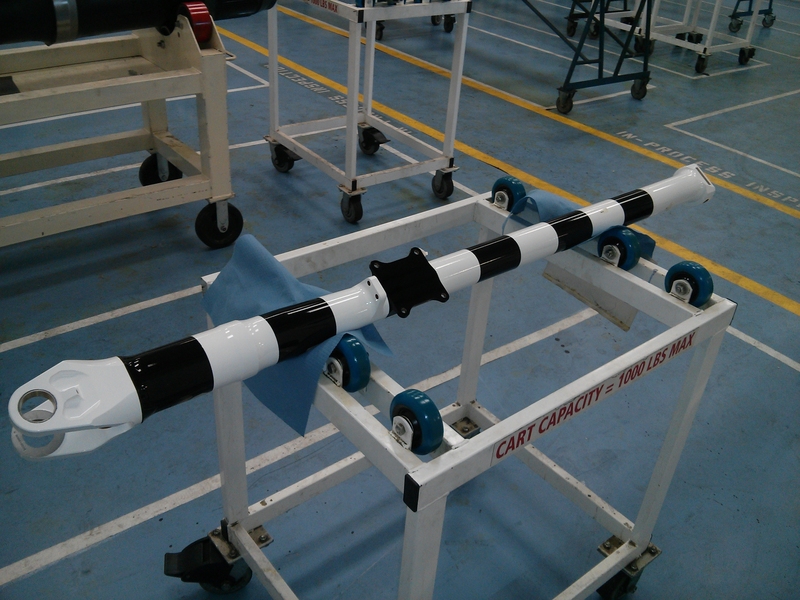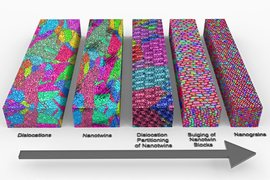What do the Apple watch and the Raptor engine of the SpaceX Starship have in common?
Answer: Both are made, in part, from advanced materials developed over only a few years — as opposed to the usual decades — with the help of computers in a field pioneered at MIT. Now eight MIT professors — including one of the inventors of the field, known as computational materials design — aim to make the field even more powerful, thanks to a five-year $7.2 million grant from the Office of Naval Research.
The work is part of the next phase of the Materials Genome Initiative (MGI) announced by President Barack Obama in 2011. The MGI is developing “a fundamental database of the parameters that direct the assembly of the structures of materials,” much like the Human Genome Project “is a database that directs the assembly of the structures of life,” says Gregory B. Olson, the Thermo-Calc Professor of the Practice in the MIT Department of Materials Science and Engineering (DMSE). The particular fundamental database structure for materials is known as “CALPHAD,” invented at MIT in the 1950s, with its commercialization pioneered by the Thermo-Calc company that supports Olson’s professorship.
The goal is to use the MGI database to discover, manufacture, and deploy advanced materials twice as fast and at a fraction of the cost compared to traditional methods, according to the MGI website.
The MIT researchers will focus their efforts on steel, “because it’s still the material [the world has] studied the longest, so we have the deepest fundamental understanding of its properties,” says Olson, project principal investigator. Those fundamental properties are key to a growing steel database that governs everything from chemical compositions to the sequence of process temperatures to design new high-performance steels.
In January, some 60 researchers met at MIT in a two-day conference designed to share progress to date and future initiatives on such cybersteels, or steels that are fully computationally designed. The meeting was sponsored by the multi-institutional “CHiMaD” Center for Hierarchical Materials Design, MIT’s Steel Research Group (SRG), QuesTek Innovations, and MIT’s Materials Research Laboratory. Olson co-founded SRG, QuesTek, and CHiMaD, and remains affiliated with all three, as well as the MRL.
From printable steels to advanced ship hulls
Cybersteels can have a variety of applications, including steels manufactured by 3D printing that are changing how naval aircraft components are made. Olson’s materials design company, QuesTek, has already used computational design technology to take cybersteels to flight qualification in naval aviation components. The Office of Naval Research is also interested in developing non-magnetic steels for ship hulls. “The detection of submarines is based on magnetism, so if you can take away the magnetism, you have a new stealth capability,” says Olson, who led computational materials design in 1985 with the late MIT professor Morris Cohen.
In 1985, Olson remembers, nobody knew whether computers could enable the design of new materials. Eventually, however, he and colleagues showed that they could, culminating in President Obama’s announcement of the MGI.
The research
The MIT cybersteels project will include work on everything from expanding our knowledge of molten steels — to be led by Antoine Allanore, DMSE professor of metallurgy — to the economic modeling of the new steels — to be led by Elsa A. Olivetti, the Esther and Harold E. Edgerton Career Development Professor in DMSE.
Another major area of study involves the boundaries between the microscopic grains that make up a steel. While the bulk thermodynamics of steel are well established, Olson says, “we need to make progress on the thermodynamics of interfaces” — the grain boundaries. Experimental work to this end will be conducted by C. Cem Tasan, the Thomas B. King Associate Professor of Metallurgy in DMSE, and James M. LeBeau, an associate professor of DMSE. Theoretical work on grain boundaries will be covered by Christopher A. Schuh, the Danae and Vasilis Salapatas Professor of Metallurgy in DMSE, and Jeffrey C. Grossman, the Morton and Claire Goulder and Family Professor in Environmental Systems and head of the Department of Materials Science and Engineering.
Olson, together with Professor David M. Parks of the Department of Mechanical Engineering, will work on incorporating simulations of steel toughening mechanisms early in the design process. Historically, simulations have been used in the late stages of design.
Olson is excited about the future. “We have [already] succeeded beyond what I had hoped this technology would be. It’s amazing to see it taking off.”










